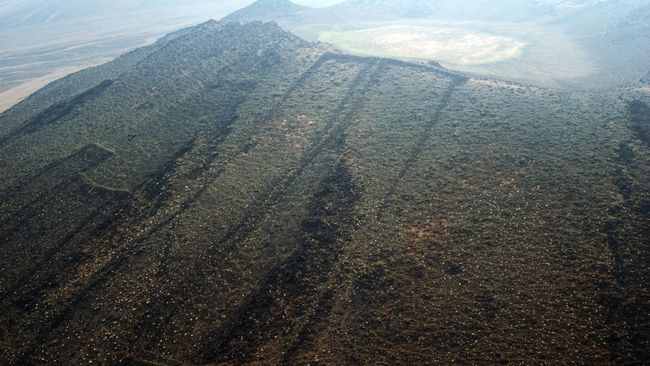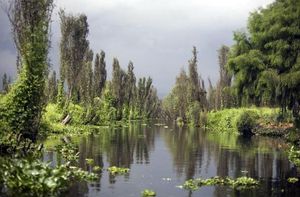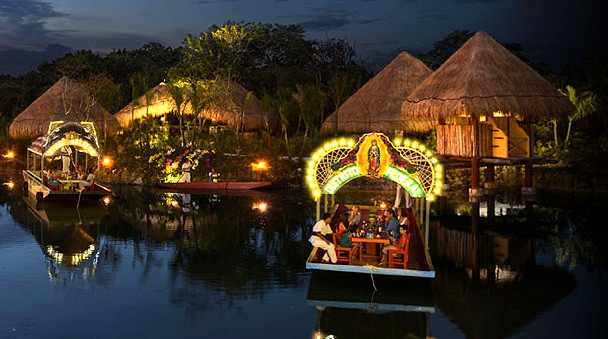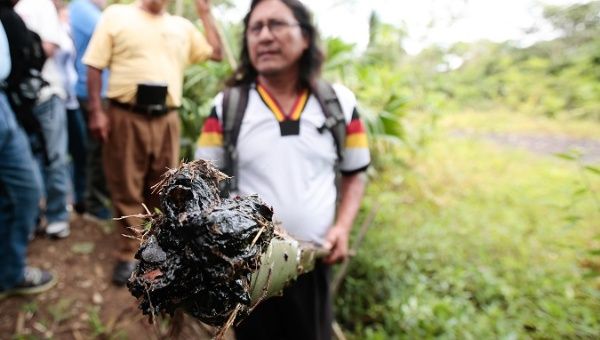Judi Lynn
Judi Lynn's JournalMassive stone structures in Saudi Arabia may be some of oldest monuments in the world
By Owen Jarus - Live Science Contributor an hour ago
They number in the hundreds and can be larger than an NFL football field.

Mustatils have been found in a wide variety of environments in Saudi Arabia including six examples
seen here on the slope of a volcano.
(Image: © Gary Rollefson)
They number in the hundreds, can be larger than an NFL football field and are found across Saudi Arabia, including on the slope of a volcano. Sprawling stone structures reported in 2017 now appear to be some of the oldest monuments in the world, dating back some 7,000 years, archaeologists now report.
A new study of the mysterious stone structures — once called "gates" but now referred to as "mustatils," the Arabic word for "rectangle" —suggests they were used for rituals; and radiocarbon dating of charcoal found within one of the structures indicates people built it around 5000 B.C., a team of researchers report in an article recently published in the journal The Holocene.
Related: See photos of the mysterious stone structures in Saudi Arabia
"The mustatil phenomenon represents a remarkable development of monumental architecture, as hundreds of these structures were built in northwest Arabia," the researchers wrote in their paper. "This 'monumental landscape' represents one of the earliest large-scale forms of monumental stone structure construction anywhere in the world."
Ritual use
The structures are made from low stone walls that form what often looks like a field gate from above (hence their former name). They range in size with some measuring less than 49 feet (15 m) long and the largest measuring about 2,021 feet (616 m) long.
More:
https://www.livescience.com/mysterious-stone-structures-saudi-arabia-oldest.html?utm_source=notification
Colombia calls on US to extradite warlord over fears he will escape justice
Salvatore Mancuso, free after a 12-year drug sentence, is wanted for gross human rights violations but is seeking to be deported to Italy
Joe Parkin Daniels in Bogotá
@joeparkdan
Thu 20 Aug 2020 13.33 EDT
Colombia has requested the extradition of a notorious paramilitary warlord jailed in the US on drug charges, amid fears that he may be deported to Italy – and escape justice for human rights crimes in the Andean nation.
Salvatore Mancuso, 56, led a rightwing paramilitary group which carried out some of the worst violence against civilians during Colombia’s decades-long civil war.
He was convicted in Colombia of more than 1,500 murders and forced disappearances, and confessed to participating in a string of horrific crimes. But in 2008 was extradited to the US where he served 12 years of a 15-year sentence on drug trafficking charges.
When was released in March, his lawyers claimed that he would be killed if he returns to Colombia, and argued that he should instead be deported to Italy, where he also holds citizenship.
More:
https://www.theguardian.com/world/2020/aug/20/salvatore-mancuso-colombia-warlord-extradition-request-us
(Remember, he knows where the bodies are buried, in atrocities which lead all the way to Duque's patron, mentor, previous President Alvaro Uribe, who is, himself, in serious trouble with the Colombian government, at long last, after years of immunity.)
Honduras: The Struggle of Garifuna Land Defenders Continues after the Kidnapping of Four Leaders
Post on: August 20, 2020 Victoria Meza Left Voice
More than a month after the kidnapping of four Garifuna leaders from the community of Triunfo de la Cruz, demonstrations demanding that they be brought back alive continue across Honduras. We spoke to Edgardo Benedit, a leader of the community, about the Garifuna people’s struggle for their lands and against the attacks they have experienced in recent years.
They took them alive; we want them back alive!” The demand reverberates throughout the streets of Honduras, more than a month after the abduction of four land defenders of the Garifuna community in the north of Honduras, Alberth Sneider Centeno, Milton Joel Martínez Álvarez, Suami Aparicio Mejía García and Gerardo Mizael Róchez Cálix , as well as Junior Rafael Juárez Mejía, a neighbor of the community. On July 18, at 5:20 a.m., a group of 12 heavily armed men wearing DPI (Police Investigation Directorate) uniforms entered the Garifuna community of Triunfo de la Cruz. They took the community leaders from their homes and, since that day, the people of Honduras have been demanding answers.
Unfortunately, this is not an isolated incident. Coveted for the development of tourism complexes and the exploitation of natural resources, Garifuna territory has been targeted by state authorities and private companies for decades. Over the years, the Garifuna have waged a heroic struggle in defense of their lands, but recently the violence has accelerated. Since 2015, more than 25 Garifuna land defenders have been murdered and their communities suffer constant attacks. Left Voice spoke with Edgardo Benedit, leader and former president of the Community Board of Triunfo de la Cruz, about the history of the Garifuna people, the violence they have suffered and fought against, and how their struggle continues.
The Garifuna community has been struggling for the defense of its lands for many years now. Can you tell us about the history of that struggle?
The Garifuna people have been dispossessed from the very beginning. Our ancestors were brought here from Africa as enslaved people. The ship used to transport them sunk and they were able to escape. They spent a long time in Jamaica, until they were able to build boats to leave the island and they reached the island of St. Vincent, where they mixed with the indigenous Arawaks. At that time, they believed they had found the blessed land, where they could live quietly and peacefully with their families, but this was not the case. In 1797, the British arrived to take possession of the island and try to subdue the Garifuna people once more. To do this, they destroyed their crops, their cassava and plantain. Finally, there was a battle between Joseph Chatoyer [the Garifuna leader] and John Bennett Baren, who was sent by England to take possession [of the island]. If the English won the battle, they would keep the island and the people would be subdued. Sadly, our leader, Joseph Chatoyer, was assassinated. So the English subdued us, but still the Garifuna people refused to be subjugated and forced into slavery. Since the English were unable to control them, because they resisted, they were sent elsewhere. They were taken away from St. Vincent and arrived in Honduras, specifically in the island of Roatán, which was the first place where the Garifuna settled. We spread out to different areas and now there are 37 Garifuna communities throughout Honduras. Most live on the seashore, because the sea has always been the livelihood of the Garifuna people- the sea, fishing and farming.
In 1821, Honduras would fight against the Spanish to gain its independence. Francisco Morazán [a Honduran military leader who became head of state] asked the Garifuna army to join the fight for independence. If the country became independent, the Garifunas were promised that they and their future generations would be able to live here in Honduras in peace. So [Garifuna leader] Francisco Bulnes, whose name was Walumugu in the Garifuna language, supported Francisco Morazán in his campaign for freedom in 1821. In 1825, when the first Constitution of the Republic of Honduras was written, the Garifuna people were recognized as Hondurans by birth, for having given their lives and having fought for independence.
. . .
Has the violence increased since the US-backed coup against Manuel Zelaya in 2009?
It has. It increased after the coup, but in the Garifuna communities it became worse after the [IACHR] resolution issued in 2015. Since then, several leaders have been murdered. For example, Balbo, a member of the community, was killed in [the Garifuna community of] Rio Tinto. The president of the Community Board of [the Garifuna community of] Masca was also murdered. In [the port city of] La Ceiba, some young people from the Garifuna community have also been killed. Three kids in [the neighboring city of] San Pedro Sula were recently captured and disappeared. And in [the municipality of] Santa Rosa de Aguán, the river was contaminated and we don’t know why. Thousands and thousands of fish died. And the river was the livelihood of the Garifuna community here. So in recent years the attacks have been more frequent and systematic against the Garifuna community. They want to make us disappear or scare us so we will flee from our land and they can achieve their goals.
More:
https://www.leftvoice.org/honduras-the-struggle-of-garifuna-land-defenders-continues-after-the-kidnapping-of-four-leaders
Mexico's famous floating gardens reopen after virus shutdown
Updated 6:57 pm CDT, Friday, August 21, 2020
MEXICO CITY (AP) — The famous “floating gardens” of Xochimilco reopened to visitors Friday after a five-month lockdown for the coronavirus pandemic.
The canals that run through man-made islands created by the Aztecs on what is now the south side of Mexico City provide a popular day trip for tourists, with flat-bottom boats plying the water and mariachis playing music.
Seeking to reassure people, the borough government cleaned and disinfected the flower-decked boats and docks, and enforced special hygiene rules, but there were few tourists or revelers for the reopening. That contrasts with the crowds in a good year, like 2015, when about 2 million people visited the floating gardens.
The tourism industry in Mexico accounts for 8.7% of the country's gross domestic product, and has been left gasping by the pandemic as both domestic and foreign tourists stay home. Mexico City, which has nearly 90,000 confirmed coronavirus cases and about 10,000 deaths, is still on the second-highest form of alert.
More:
https://www.chron.com/news/article/Mexico-s-famous-floating-gardens-reopen-after-15506357.php#photo-19849873







(Short article describing the Floating Gardens (Chinampas) of Xochimilco)
Aztec Advancement’s
The Aztec’s made advancement’s which earned them the title as one of the most advanced civilizations on earth. A few of these advancements include their capital city of Tenochtitlan located on Lake Texaco in central Mexico. Other advancements include the tax system, farming systems, and calendar systems that the Aztec’s created in order to achieve massive amounts of gold and create a more civilized way of living. All of these advancements were far ahead of their time considering that the Aztec’s were under no European influence until Hernan Cortes discovered the city of Tenochtitlan and began to change the Aztec’s way of living to better suit the culture of the Spanish.
Aztec Farming:
The Aztec’s created, Chinampas (floating gardens) throughout their city of Tenochtitlan. This was the only way the Aztec’s were able to farm, since their city was built over top of a marshy lake. This innovation provided the Aztec’s with a way of farming in a difficult area as well as a self-irrigation system for their crops year around. Since the Chinampas were built by building up the soil in the water until reaching the top where the farmer would be able to plant the seeds, the soil was able to absorb the water surround the garden plot, therefore creating a self-irrigation system. These floating garden were one of the Aztec’s greatest advancements and shows how skilled and adaptable these people were to their environment. This way of farming is still used today in Central Mexico and is one of the most efficient ways to farm.
More:
https://azteccivilization.wordpress.com/about/aztec-advancements/



Chinese fishing fleet goes dark near Galapagos
By Yuri Garcia
August 19, 2020 — 12.37pm
Guayaquil, Ecuador: Ecuador's armed forces say dozens of vessels from a predominantly Chinese fishing fleet operating near the Galapagos Islands have turned off tracking systems to prevent monitoring of their activities.
Of around 325 ships still fishing in the waters near the ecologically sensitive Galapagos, 149 have at some point in recent months cut off communications, Navy Commander, Rear Admiral Darwin Jarrin said.
Some had also changed the vessels' names to avoid supervision, he said.
"In this period, 149 ships have turned off their satellite systems ... we know the name of the ships," Jarrin said during a press conference. He declined to identify the vessels.
The complaint comes as the South American nation is seeking to prevent unsustainable fishing off its coast while also avoiding a confrontation with China, its largest financier and a major market for its shrimp export business. In 2017, it apprehended a Chinese-flagged vessel with 300 tonnes of shark and fish on board.
More:
https://www.brisbanetimes.com.au/world/south-america/chinese-fishing-fleet-goes-dark-near-galapagos-20200819-p55n6j.html
Why former paramilitary leader is making people in Colombia uneasy
by Adriaan Alsema August 17, 2020
The former leader of Colombia’s AUC paramilitaries knows exactly which politicians and security officials are trying to get away with murder, like the country’s ambassador to Washington DC.
Human Rights Watch Americas director Jose Miguel Vivanco explained already that bungling the extradition of Salvatore Mancuso would be a “slap in the face of victims” and “guarantee impunity.”
The entire purpose of demobilizing the paramilitaries and extraditing Mancuso may have been to grant impunity as, according to the former rancher, he took up arms in 1989 and knows exactly which politicians, businesses, ranchers and members of the military collaborated with the paramilitaries without doing time.
Mancuso’s explosive paramilitary might
Mancuso founded the Horizonte Ltda. which was formally dedicated to “the retail of a variety of products, mainly beverages and tobacco while providing community participation and security” in Tierralta, Cordoba, in 1995, but was really part of the illegal ACCU paramilitary group formed by the Castaño family and Medellin crime lord “Don Berna.”
In 1997, Mancuso founded Guaymaral Ltda with Jorge Gnecco, the late brother-in-law of journalist Vicky Davila, who spent most his life trafficking drugs.
More:
https://colombiareports.com/why-former-paramilitary-leader-is-making-people-in-colombia-uneasy/
How Colombia's mass media helped terrorize people into voting for Uribe
by Adriaan Alsema August 17, 2020
Colombia’s mass media played a key role in a 2002 terror campaign that sought to get former President Alvaro Uribe elected and the obstruction of justice to keep him out of prison.
This worked for a while as the media prioritize “the interests of the mafia and the plutocracy” instead of the public, according to the Autonomous University in Cali.
Despite the effort, Uribe is close to joining many of his former allies in prison as the Supreme Court is investigating the alleged fraud and bribery practices of the former Medellin Cartel associate.
Electoral terrorism
Ahead of the elections, Medellin newspaper El Colombiano focused almost exclusively on guerrilla violence.
The earliest evidence Uribe was using mass media for a terror campaign dates back to the 2002 election campaign when media falsely blamed FARC guerrillas for five terrorist attacks in Bogota carried out by the National Army.
A fabricated assassination attempt on Uribe in the northern city of Barranquilla that cost the lives of five civilians one month before the elections was carried out by now-defunct intelligence agency DAS, but was also attributed to the FARC.
More:
https://colombiareports.com/how-colombias-mass-media-terrorized-people-into-voting-for-mike-pences-hero/
Colombia's military mafia threatening police investigators: report
by Adriaan Alsema May 24, 2020
The mafia that has infiltrated Colombia’s military has been sending death threats to police officials who are investigating them, newspaper El Espectador reported on Saturday.
The death threats sent to the officials’ Whatsapp indicate that the military mafia has identified the investigators examining evidence found during a raid in two military intelligence offices in December last year.
These raids revealed that corrupt military officials had been wiretapping on the Supreme Court, journalists, NGOs and politicians, weekly Semana reported in January.
First the journalists, now the police
The criminal infiltrators made it clear to the investigators of the National Police’s intelligence unit DIJIN, which is carrying out the investigation, that the families of the police officials have also been shadowed.
More:
https://colombiareports.com/colombias-military-mafia-threatening-police-investigators-report/
List of low-risk countries updated, Portugal and Cuba added
August 13 2020 01:01 AM
As Qatar continues to implement its travel policies, the list of low-risk countries has been updated based on public health indicators in Qatar and around the world.
The changes will come into effect on Saturday, August 15, the Government Communications Office (GCO) tweeted Wednesday.
Government Communications Office (GCO)
Rate
Text Size: A A A
As Qatar continues to implement its travel policies, the list of low-risk countries has been updated based on public health indicators in Qatar and around the world.
The changes will come into effect on Saturday, August 15, the Government Communications Office (GCO) tweeted Wednesday.
While Portugal and Cuba have been added to the list of low-risk countries, Belgium and Andorra - which were included on the first list issued last month - have been removed.
The list is subject to change at the discretion of the Ministry of Public Health. One can visit the ministry's website for updates.
For travellers to be considered for the low-risk country exemption, they are required to stay in a low-risk country for a minimum of one week. In the event the traveller stays for less than a week in the low-risk country, s/he must follow the policies applied to arrivals coming from countries outside the low-risk category, the GCO stressed.
The updated list is as follows:
* Europe: Hungary, Finland, Latvia, Estonia, Norway, Italy, Lithuania, Greece, Slovakia, Ireland, Germany, Slovenia, Denmark, Cyprus, United Kingdom, Poland, Austria, the Netherlands, Iceland, France, Croatia, Switzerland, Malta, Portugal, Czech Republic and Sweden
* Asia: Brunei Darussalam, Thailand, China, Vietnam, Malaysia, South Korea, Japan and Turkey
* Africa: Algeria and Morocco
* Americas: Cuba and Canada
* Oceania: New Zealand and Australia
Last updated: August 13 2020 01:16 AM
https://www.gulf-times.com/story/670539/List-of-low-risk-countries-updated-Portugal-and-Cu
European Banks Finance Devastation of Amazon Rainforest-Report

The Amazon Sacred Headwaters region is the birthplace of the Amazon river but also home to more than 500,000 Indigenous people from over 20 nationalities. | Photo: EFE/ José Jacome
Published 12 August 2020
A group of European banks has financed the oil trade from the Amazon Sacred Headwaters region in Ecuador to the U.S. for about 10 billion dollars during the last decade, according to a report published on Wednesday by environmental organizations Stand.earth and Amazon Watch.
The North-American based organizations say that ING Belgium, Credit Suisse, UBS, and BNP Paribas (Suisse) SA in Geneva, Switzerland; Natixis in Paris, France; and Rabobank in Utrecht, Netherlands are responsible for 85 percent of all bank-financed trade out of the 19 banks assessed.
The Amazon Sacred Headwaters region is the birthplace of the Amazon river but also home to more than 500,000 Indigenous people from over 20 nationalities. It spans about 30 million hectares in Ecuador and Peru, and it is considered one of the most biodiverse terrestrial ecosystems on the planet.
The report highlights that the oil industry is having a devastating impact on the region. About 120.000 Ecuadorean people live near rivers, 27.000 of them Indigenous, they have lost their freshwater, livestock, and produce. Some of them suffer "documented skin diseases caused by crude oil from swimming in the rivers before they knew about the spill." This, amid all the threats posed by the COVID-19 pandemic.
Furthermore, the organizations denounced that drilling for fossil fuels in the most biodiverse rainforest on the planet is causing deforestation and facilitating the violation of Indigenous peoples' rights as well as jeopardizing the survival of its culture.
The investigation points out that from 2009 to May 2020, private financial institutions have provided "trade financing for approximately 155 million barrels of oil from the Amazon Rainforest in Ecuador to refineries in the United States, worth about $10 billion."
More:
https://www.telesurenglish.net/news/European-Banks-Finance-Devastation-of-Amazon-Rainforest-Report-20200812-0013.html
Profile Information
Member since: 2002Number of posts: 160,516